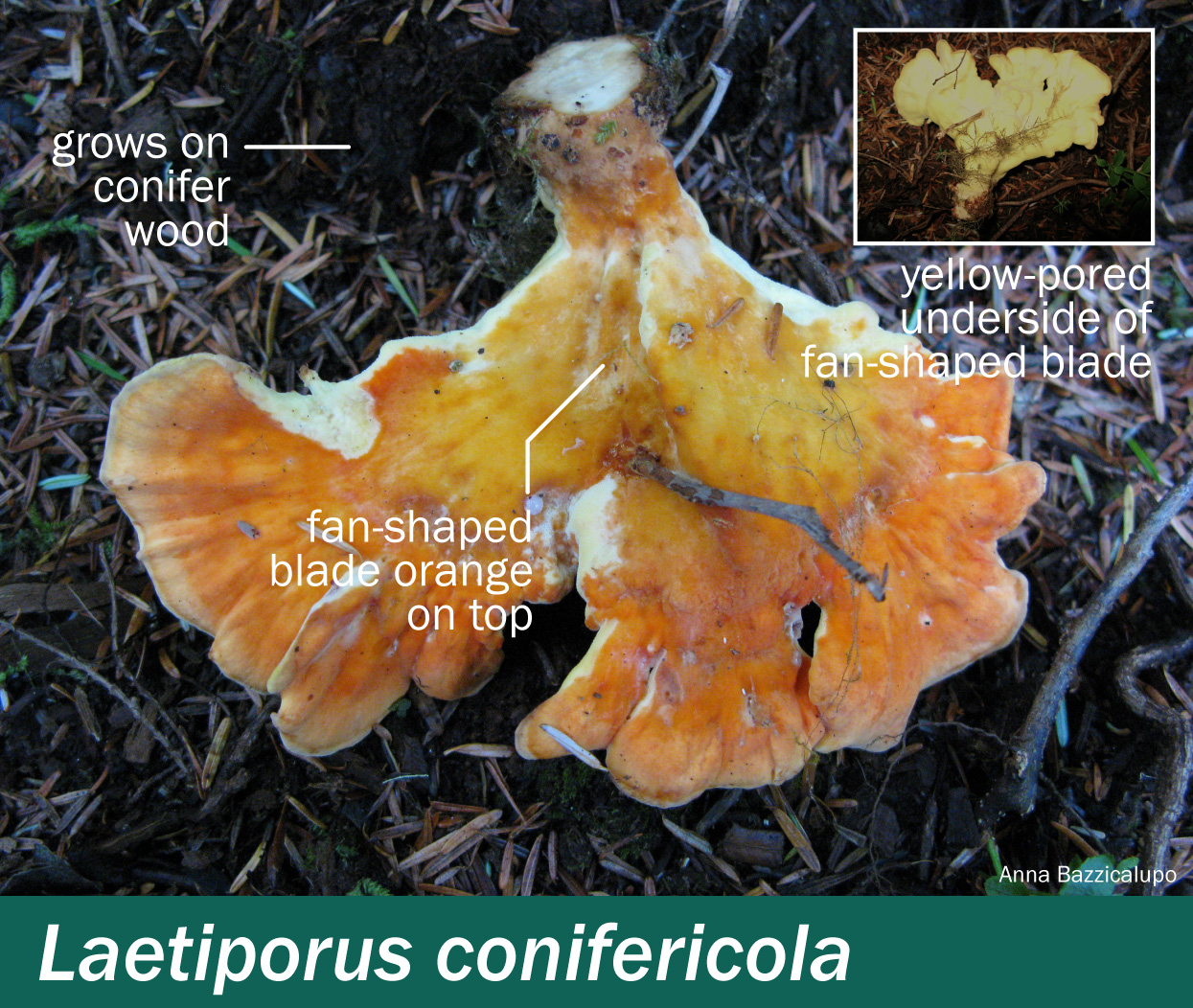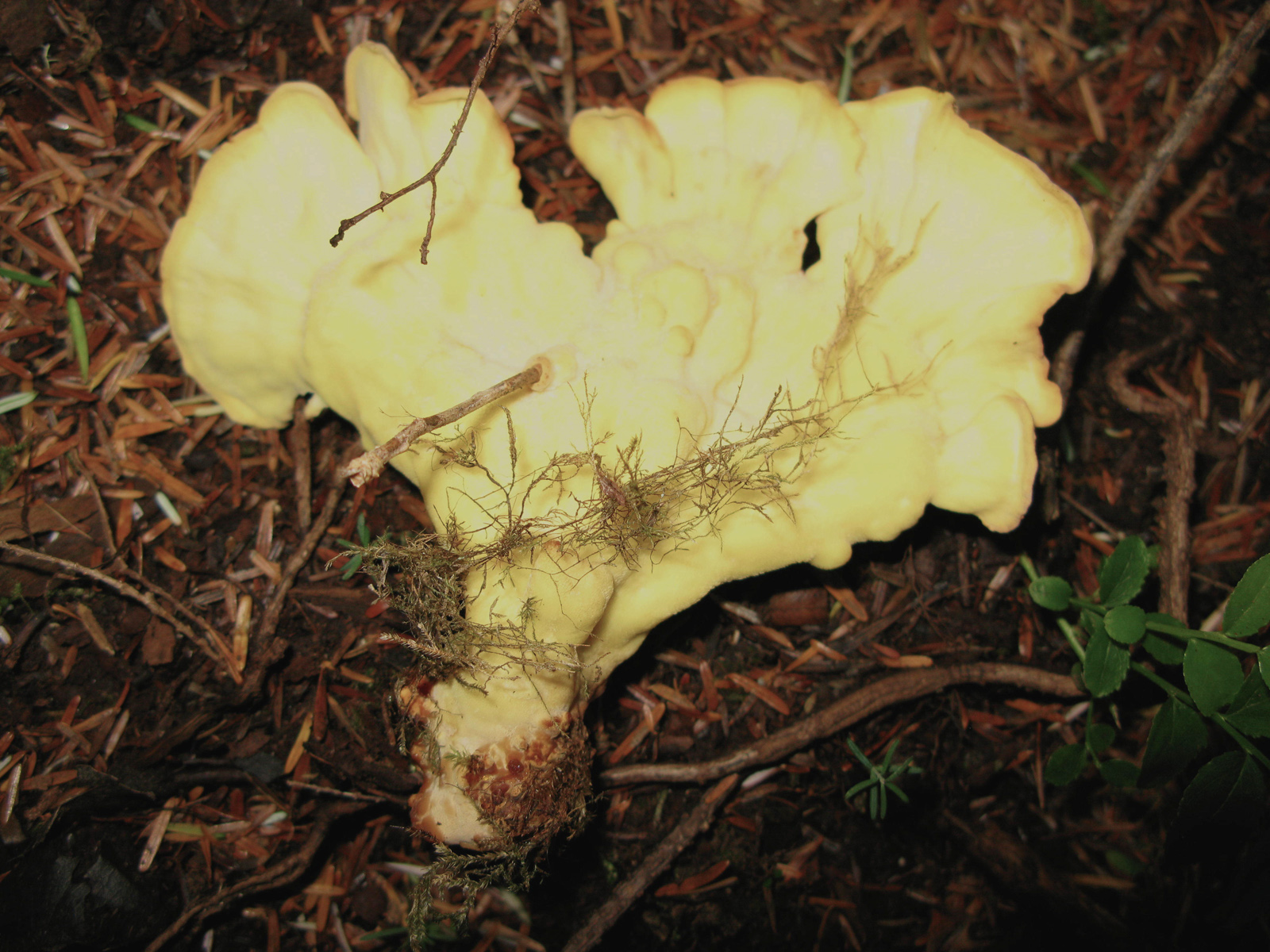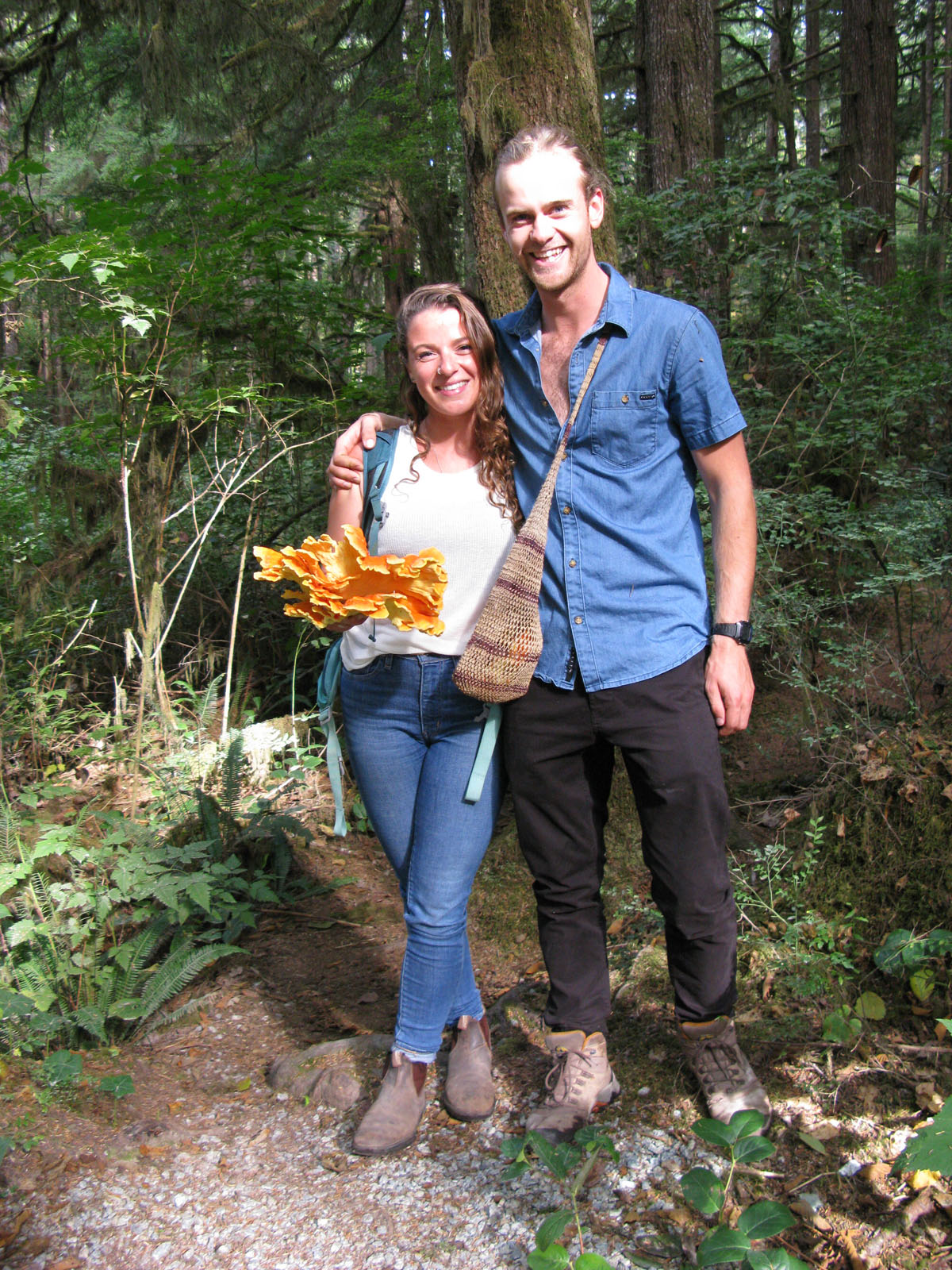Laetiporus conifericola — Conifer sulphur shelf
Large, bright orange and yellow, fan-shaped, shelving fruiting bodies that last one season.
Odour: Indistinct to a bit sour in old age.
Taste: Mild to sour.
Cap: Up to 25 cm wide, 15 cm deep, and 3 cm thick. Margin wavy with age. The colour of the cap's upper surface is bright orange to deep orange, sometimes a bit more salmon-coloured, and more yellow at the margin. The flesh is pale yellow and firm. With age, the fruitbodies become white-chalky.
Pores: 2-4 per mm, decurrent onto stem, circular to a bit angular with age. The pore surface is yellow, bright lemon yellow to more creamy yellow. The tubes are 1-5 mm long.
Stem: Short or absent, with same colour as cap.
Ring or veil: None.
Cup: None.
Spores: 6.5-8.0 x 4.0-5.0 µm, smooth.
Habitat: In big shelf-like clusters on mature living and dead coniferous stems, stumps, and snags, often on Douglas fir (Pseudtosuga menziesii) and Sitka spruce (Picea sitchensis). Growing initially as a root parasite and continuing as a saprotroph on dead wood.
Geographical distribution: On conifers in western North America, from Alaska southwards into California.
Some people enjoy eating growing margins or young specimens of sulphur shelves without ill effects, while others have experienced gastrointestinal upsets, rashes, fever, flushing or headaches after consumption5. One woman died from shock 19 hours after eating a few forkfuls. Suggesting that she had an unusual individual sensitivity, her dinner companions did not become ill5. More often, the basis for bad reactions is unclear. Until recently, all sulphur shelves were lumped in one species, Laetiporus sulphureus3. Perhaps some of the more modern, narrowly defined species are more likely to provoke illness than others. Possibly, old or ill-prepared specimens are to blame for some unpleasant reactions. To minimize the chances of an unpleasant reaction, sulphur shelves should be eaten only if fresh, tender and young; they should be cooked thoroughly, and they should be eaten in small (single spoonful) quantities, especially when trying them for the first time.
Treatment: Contact your regional Poison Control Centre if you or someone you know is ill after eating a sulphur shelf. Poison centres provide free, expert medical advice 24 hours a day, seven days a week. If possible, save the mushrooms or some of the leftover food containing the mushrooms to help confirm identification.
Poison Control:
British Columbia: 604-682-5050 or 1-800-567-8911.
United States (WA, OR, ID): 1-800-222-1222.



